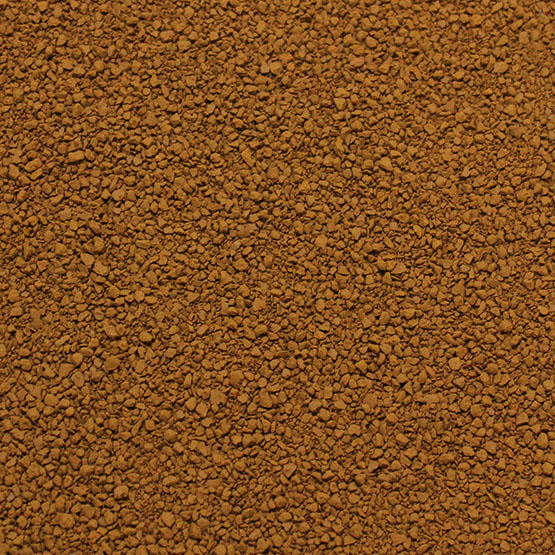Filtration
PhosNet™ is a granular ferric oxide (GFO) with high porosity, high surface area and high binding capacity. It will rapidly remove phosphates and silicates from both freshwater and saltwater and will not release them back into your aquarium. It exhibits stronger binding than most competing products and consequently can reduce phosphates and silicates to very low levels. PhosNet™ also offers less dust and thus is easier to use than most competing GFO products.
Sizes: 50 g, 125 g, 250 g, 500 g, 2 kg
For best results, PhosNet™ should be rinsed before use and placed so as to maximize the flow of water through it but not so that it tumbles against itself in flow. It may be used in a canister filter, media chamber, box filter, or any high flow area of a trickle filter. Use of a filter bag such as The Bag is recommended.
Use 50 g (1/2 cup) for every 200 L (50 US gallons) saltwater or 400 L (100 US gallons) freshwater. Leave product in place for 4 days, then test phosphate or silicate concentrations with either MultiTest™ Phosphate or MultiTest™ Silicate. If the concentration of the component you are trying to decrease has not dropped to around 0.02 mg/L, then replace the PhosNet™, otherwise leave in place until levels begin to climb again. As long as concentrations remain under control, the product is not exhausted. Over treating is not recommended. PhosNet™ is not an exchange resin and does not release anything into the water. It does not leach phosphate or silicate back into the water and may be removed, dried, and returned to service until exhausted. Continuous use of small quantities is better than intermittent use of larger quantities.
A: PhosNet™ Is best used in smaller quantities and changed frequently. In an environment with an excessively high phosphate reading, PhosNet™ will exhaust rapidly (4 – 5 days). Place the product in a high flow rate area and test your phosphate levels, changing as needed. When you see that your level is below 0.2 ppm (mg/L) leave that portion of PhosNet™ in the filter. Continue to test weekly for phosphate until you see it begin to rise again. You will then know that it is time to change the PhosNet™. If you have low levels of phosphate the PhosNet™ will absorb the silicate in your system. It’s inert and safe to leave in your filter.
A: It is actually quite easy to change the apparent capacity of a GFO during testing. If the capacity of a GFO is tested at an extremely low pH with a phosphate concentration that is much higher than the media can completely, the media will temporarily absorb much more phosphate than it would under ordinary aquarium conditions. We have no interest in artificially puffing up our numbers, so the capacity we have listed is the amount of phosphate that the media can completely remove (without releasing back into the water) in a pH of 8.4.
A: We do not recommend it, as the tumbling action of a media reactor can cause this media to produce dust.
A: The main difference between these medias is capacity. PhosGuard has the lowest capacity at 0.82 mg/g of PO4 bound, but is the most economical of the four medias. PhosBond™ has a higher capacity than PhosGuard at 1.19 mg/g of PO4 bound, and combines the benefits of PhosGuard and a pure GFO (strength, high capacity, and rapid phosphate absorption) while still being very economical. PhosNet™ has the highest capacity of the Seachem phosphate absorbers at 1.41 mg/g of PO4 bound, and is a pure GFO media. Our aquavitro® phosfiltrum™ is a super-high capacity GFO (1.71 mg/g of PO4 bound) that produces very little dust. This media has a higher capacity than any other GFO on the market.
A: In recent years, there has been speculation that aluminum oxide based phosphate removers like PhosNet™ release aluminum into the water and subsequently damage corals. The evidence to support this claim was largely anecdotal.
So, through a series of controlled experiments in both freshwater and saltwater, we intended to address both the question of aluminum solubility and aluminum toxicity. The results of these experiments show that under reef conditions (pH near 8) there is no detectable soluble aluminum released from alumina. Under conditions of low pH and high dosage levels, soluble aluminum can be released from alumina; at three times the label dosage rate, we detected 0.2 mg/L aluminum at a pH of 5.3.
Additionally, aluminum oxide is not easily absorbed into the cell to cause negative reactions. Even at three times the dose, soft-bodied corals such as Sarcophyton remain unaffected.
For the full report on this study, click here.
A: Not at all! If it takes a phosphate absorber several months to reach its full capacity when the tank has high phosphates, it means that the media is exceptionally slow at absorbing phosphate. PhosNet™ needs to be replaced every 4 days as long as there is a phosphate problem because, given an infinite amount of available phosphate, PhosNet™ absorbs phosphate so quickly that it reaches its full capacity in 4 days. The 4 day replacement period is a function of how quickly the media works, not a function of how high a capacity the media has.
Can't find what you're looking for? Ask us a new question. One of the experts from our technical support staff will be happy to promptly respond. You can also call 888‑732‑0003 (Monday- Friday 9:00 AM - 5:00 PM EST) if you would like to speak directly with a technical support representative.


